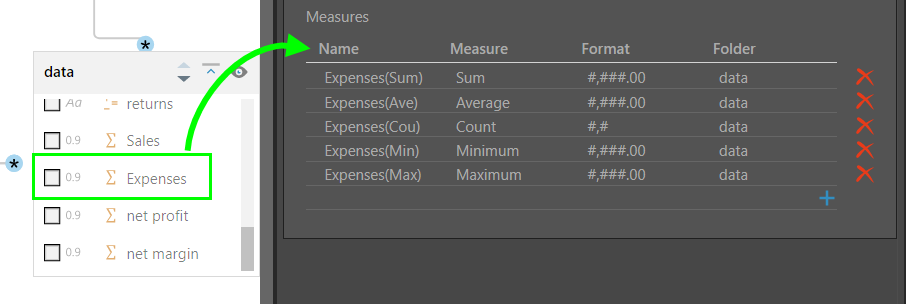Multi-Measures
A multi-measure column is a column that has multiple measure aggregations assigned to it. This allows you to look at a measure column from several vantage points. For instance, you may have a numeric 'Sales' column that you want to aggregate not only sum, but also by average, count, minimum, and maximum.
Pyramid uses heuristics to detect measure columns and assigns them to the Sum measure aggregation type by default. Via the Measure Editor, or via the Columns panel, you can assign multiple measure aggregations to a single measure column to produce a multi-measure column.
- Click here to learn more about the Measure Editor.
Configure Multi-Measures
Multi-measures can be configured from both the Tables panel and the Columns panel. To assign multi-measures to a column from the Tables panel, left click on the column to open its Properties panel.

Multi-Measure Outputs
When the model is processed, multi-measure columns produce multiple distinct measures that are organized into the given measure folder. In the example below, we see 5 different measures for Expenses (red highlight below):
